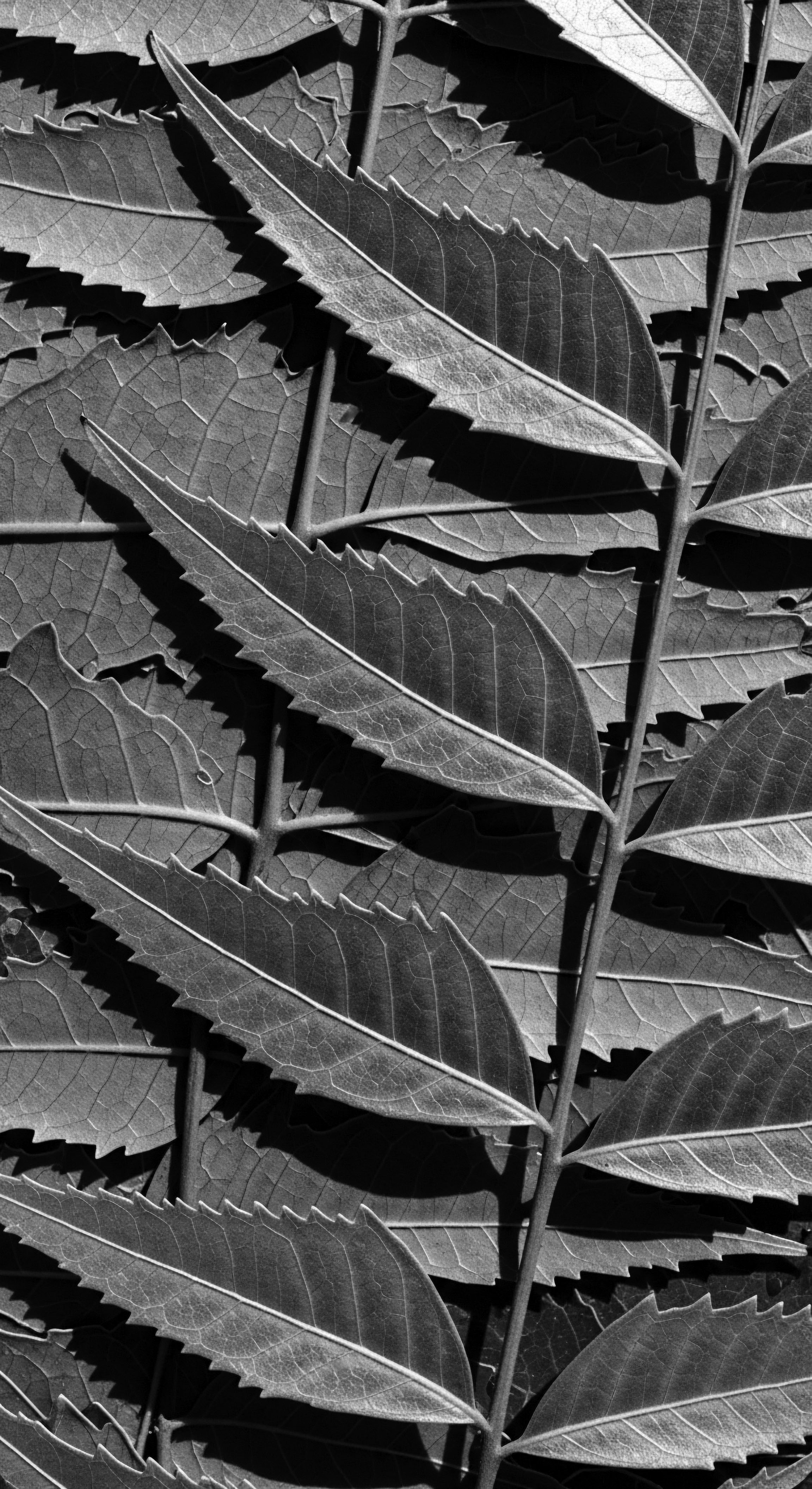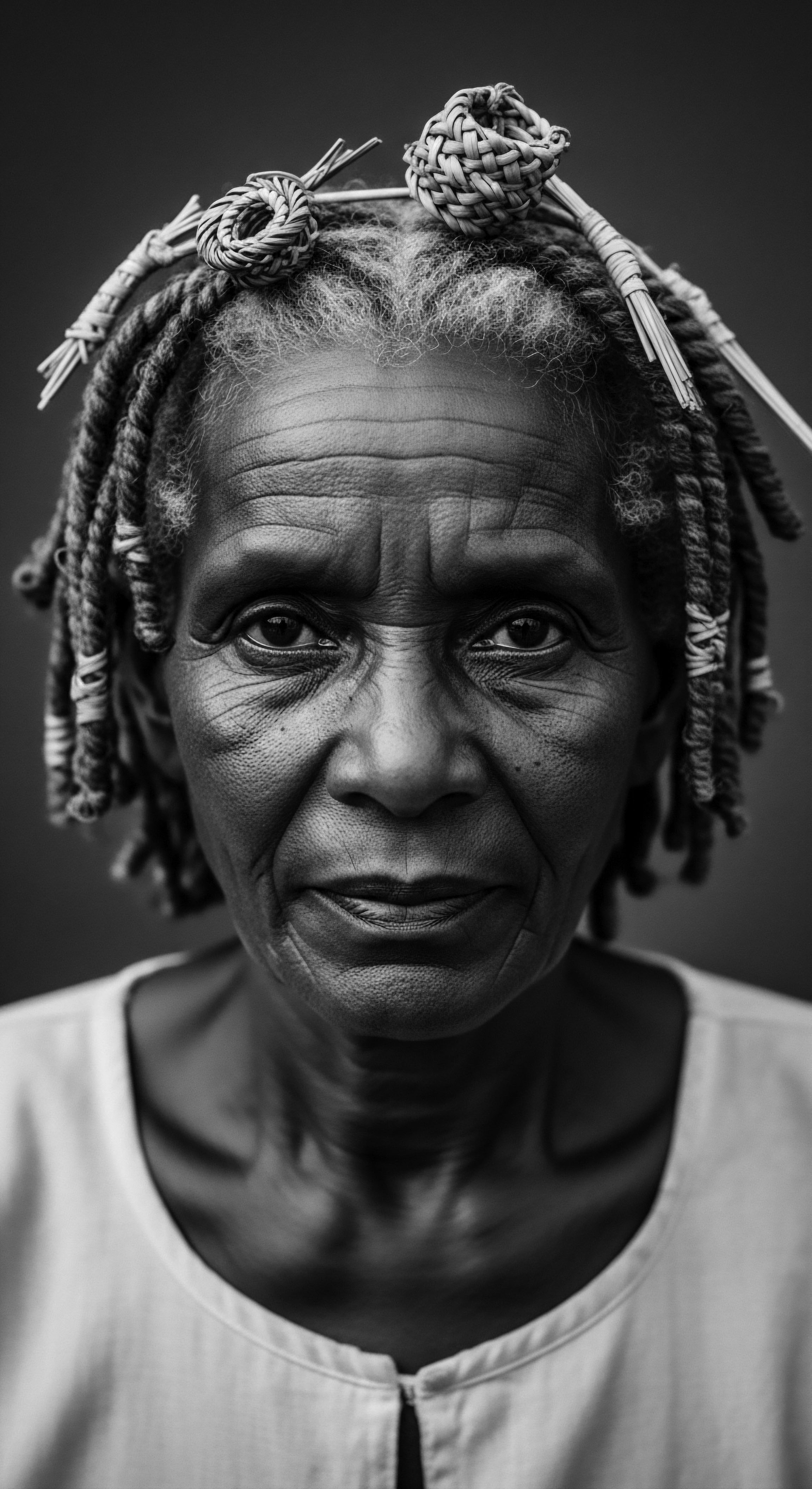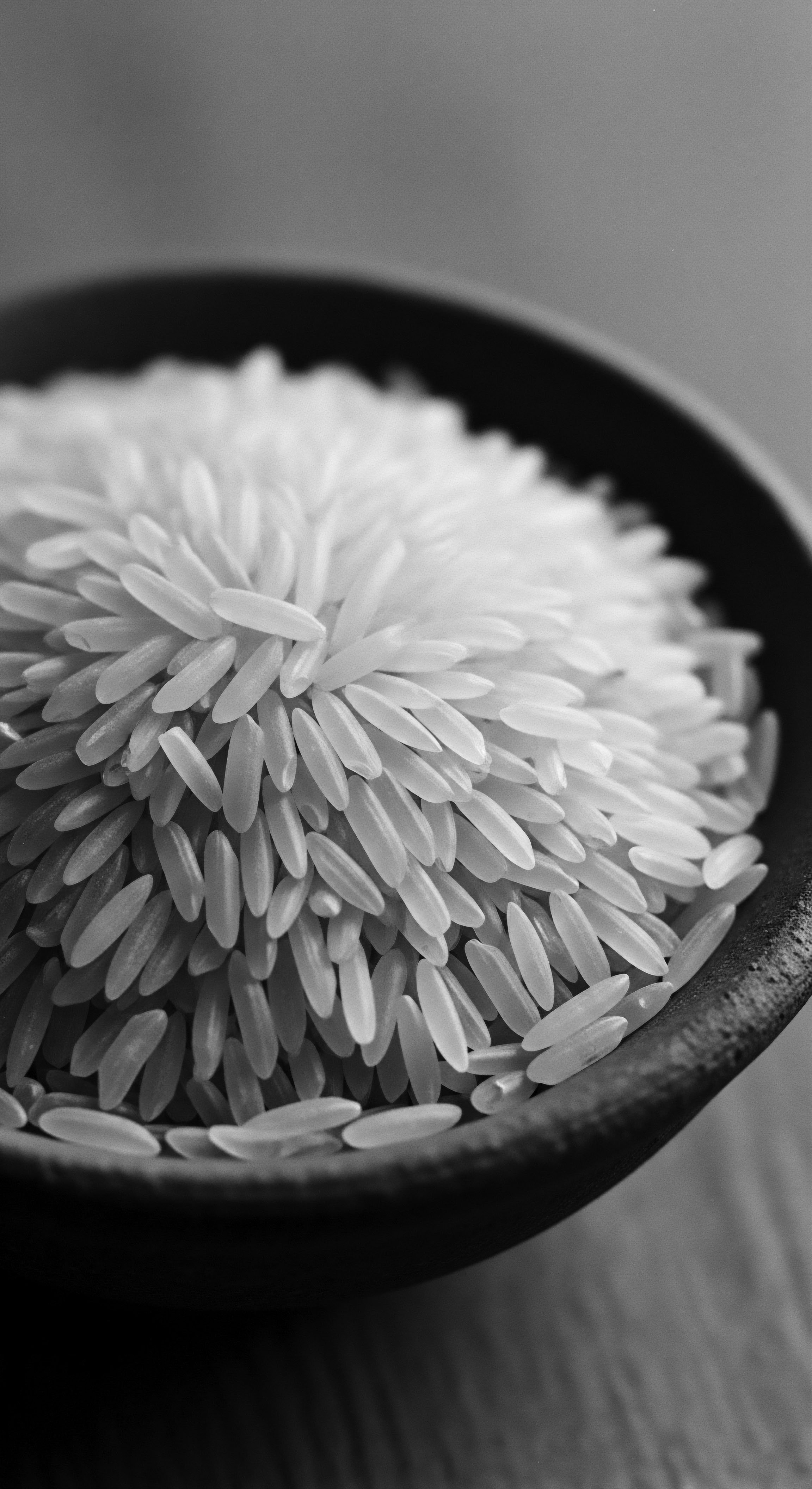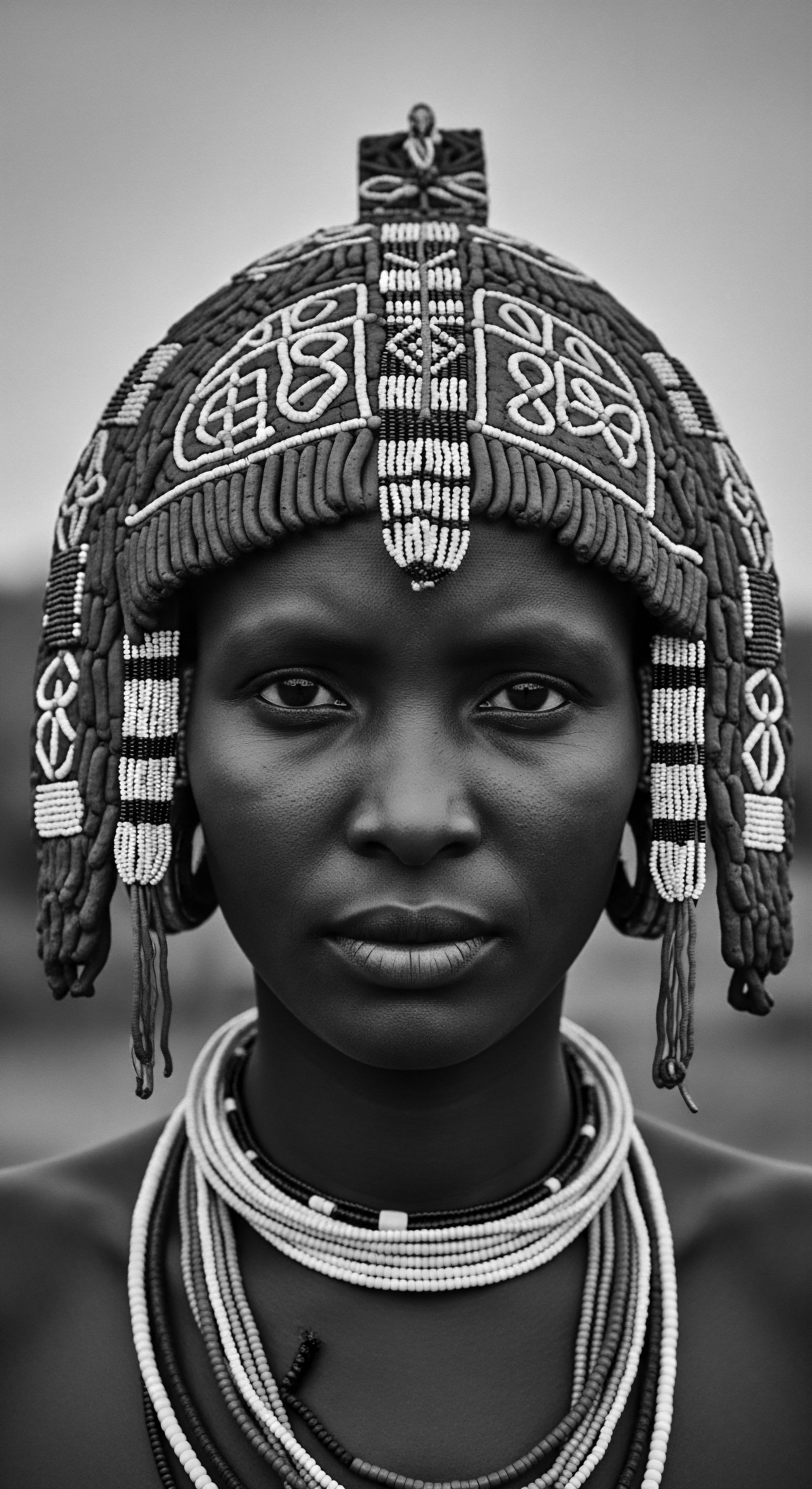
Fundamentals
The essence of Shea Butter Benefits, at its foundational level, speaks to the inherent qualities of a natural balm derived from the nuts of the African shea tree, scientifically known as Vitellaria Paradoxa. This tree, often called the ‘tree of life’ in its native regions, yields a fruit containing a seed from which a creamy, ivory-to-yellow fat is extracted. This butter, solid at room temperature yet melting readily upon skin contact, has been a cornerstone of traditional wellness practices for millennia. Its straightforward meaning centers on providing profound moisture and a protective shield for both skin and hair.
For those new to its wonders, understanding the fundamental properties of shea butter begins with its composition. It is a substance rich in fatty acids, primarily Oleic and Stearic Acids, along with a notable unsaponifiable fraction containing vitamins A, E, and F. These elements collectively contribute to its remarkable ability to hydrate and soothe.
The journey of shea butter, from tree to balm, is a testament to ancestral wisdom. For centuries, communities in West and East Africa have harvested the nuts, traditionally processed by women through labor-intensive methods of drying, crushing, roasting, grinding, and kneading. This time-honored approach ensures the purity and potency of the butter, reflecting a deep connection to the earth and its offerings.
Shea butter, at its core, represents an ancient gift from the African savannah, offering elemental moisture and protection that has sustained generations.
The initial understanding of shea butter’s advantages for textured hair arises from its deeply nourishing characteristics. Textured hair, with its unique curl patterns and natural propensity for dryness, responds particularly well to the rich, emollient qualities of shea butter. It serves as a natural sealant, helping to retain moisture within the hair shaft, thereby reducing breakage and enhancing softness.
Some foundational applications in traditional hair care include:
- Moisturizing Balm ❉ Applied directly to dry hair and scalp to alleviate dryness and provide lasting hydration.
- Scalp Conditioner ❉ Massaged into the scalp to soothe irritation and support a healthy environment for hair growth.
- Protective Layer ❉ Used to shield hair from harsh environmental elements, including sun and wind, a practice deeply ingrained in ancestral communities living in varied climates.
This simple, yet profound, explanation of shea butter benefits provides a gateway into its more complex cultural and scientific dimensions, always remembering its deep roots in African heritage.

Intermediate
Moving beyond the basic understanding, the intermediate interpretation of Shea Butter Benefits reveals a more intricate interplay between its biochemical composition and its specific efficacy for textured hair. The designation of shea butter as ‘women’s gold’ in many African regions speaks volumes about its economic and social significance, a heritage that underpins its widespread use. This golden hue, sometimes literal and often symbolic, reflects the profound value it holds within communities.
The richness of shea butter is attributed to its high concentration of specific fatty acids ❉ Oleic Acid, Stearic Acid, Palmitic Acid, and Linoleic Acid. Oleic acid, a monounsaturated fatty acid, contributes to its deep penetrating moisture, allowing it to be absorbed into the hair shaft. Stearic acid, a saturated fatty acid, provides a protective barrier, helping to seal moisture into the hair. This dual action is particularly beneficial for textured hair, which often experiences challenges with moisture retention due to its unique curl patterns and raised cuticles.
Moreover, the presence of unsaponifiable matter, which includes vitamins A, E, and F, along with triterpenes and cinnamic acid esters, grants shea butter its anti-inflammatory and antioxidant properties. Vitamin E, an antioxidant, helps protect hair from environmental stressors. Vitamin A supports cell regeneration, contributing to overall scalp health. These components work in concert to not only moisturize but also to soothe and protect the scalp, fostering a healthier environment for hair growth.
The deep conditioning and protective qualities of shea butter for textured hair are rooted in its balanced fatty acid profile and potent unsaponifiable compounds, a synergy long recognized in ancestral care practices.
The application of shea butter within ancestral hair care rituals extends beyond simple conditioning; it represents a holistic approach to wellness, where hair care is interwoven with communal practices and spiritual meaning. Its use in traditional ceremonies, for example, highlights its cultural depth. The historical evidence suggests its presence in ancient Egyptian beauty regimens, where it was stored in clay jars, a testament to its long-standing value.
The traditional processing methods, passed down through generations of women, further differentiate shea butter. These artisanal techniques, often involving hand-kneading and specific drying processes, are believed to preserve the butter’s therapeutic qualities, distinguishing raw, unrefined shea from more processed variants. The color of the butter, ranging from ivory to goldenrod, can offer clues to its processing and origin, connecting the user to the rich heritage of its production.
Consider the varying forms of shea butter and their implications for textured hair care:
| Processing Method Raw/Unrefined Shea Butter |
| Characteristics for Hair Retains highest concentration of vitamins, fatty acids, and unsaponifiable matter; deep moisture, anti-inflammatory, protective. |
| Heritage Connection Direct link to ancestral practices, often produced by women's cooperatives, preserving traditional knowledge. |
| Processing Method Refined Shea Butter |
| Characteristics for Hair Lighter texture, less scent, often bleached or deodorized; some beneficial compounds may be reduced. |
| Heritage Connection Modern adaptation for broader market appeal, less direct connection to traditional, community-based production. |
| Processing Method Expeller-Pressed Shea Butter |
| Characteristics for Hair Mechanically extracted, often without chemicals, retaining more nutrients than solvent-extracted but less than raw. |
| Heritage Connection A bridge between traditional and industrial methods, seeking efficiency while retaining some purity. |
| Processing Method Understanding these distinctions allows for a more informed choice, honoring the legacy of shea butter in textured hair care. |
For individuals with curly, coily, or wavy hair, the intermediate understanding of shea butter benefits extends to its ability to define curl patterns, reduce frizz, and enhance natural shine without weighing down strands, especially for denser hair types. This aligns with its historical role in crafting protective styles and maintaining hair health in challenging climates.

Academic
The academic meaning of Shea Butter Benefits transcends a mere list of its properties, delving into its profound significance as a botanical, economic, and cultural artifact, particularly within the vast and varied landscape of textured hair heritage. It represents a complex interplay of ethnobotanical wisdom, biochemical efficacy, and socio-economic empowerment that has shaped the hair care traditions of African and diasporic communities for millennia. This deeper understanding necessitates a comprehensive examination of its historical trajectory, its chemical nuances, and its enduring impact on identity and community resilience. The designation of the shea tree, Vitellaria Paradoxa, as the ‘tree of life’ in its native West and East African savannah belt, stretching across twenty countries, underscores its multifaceted importance far beyond cosmetic application.
The biochemical profile of shea butter is a subject of ongoing scientific inquiry, validating the intuitive wisdom of ancestral practices. Its richness in a unique blend of fatty acids—including Stearic, Oleic, Palmitic, and Linoleic Acids—is central to its therapeutic value. Stearic acid (typically 30-50%) and oleic acid (40-60%) are the predominant components, contributing to its solid yet meltable consistency and its exceptional emollient properties. Beyond these, the unsaponifiable fraction, a significant portion that sets shea butter apart from many other vegetable fats, contains triterpenes (like amyrin, lupeol, and butyrospermol), tocopherols (Vitamin E), phytosterols, and cinnamic acid esters.
These compounds confer anti-inflammatory, antioxidant, and even mild UV-protective qualities. For textured hair, this means more than just surface-level conditioning; it implies a deep cellular interaction that soothes scalp irritation, fortifies the hair fiber against environmental aggressors, and potentially supports cellular regeneration within the hair follicle.
From an academic lens, the significance of shea butter benefits is inextricably linked to its historical role as a primary source of economic independence for millions of women across the ‘Shea Belt’ of Africa. Often referred to as ‘women’s gold,’ this appellation speaks not only to its golden hue but to the substantial income it generates for women, who traditionally oversee its harvesting and processing. For instance, the United Nations Development Programme (UNDP) estimates that approximately Three Million African Women Derive Income from the Shea Industry, a figure that highlights its immense socio-economic impact (United Nations Development Programme, as cited in Obscure Histories, 2024). This tradition, passed down from mother to daughter for centuries, represents a resilient system of knowledge transfer and economic agency.
The collection of shea nuts, a labor-intensive process, typically occurs during the wet season from May to September when the ripened fruits fall naturally. Women then engage in a series of meticulous steps ❉ drying, crushing, roasting, grinding the kernels into a paste, and then kneading this paste with water until the butter separates. This artisanal production, often involving hand-stirring in large metal bowls, maintains the integrity of the butter’s beneficial compounds and sustains local economies. The economic empowerment it provides allows women to support their families, fund children’s education, and contribute to community development, often in regions where other opportunities are scarce.
The deep-rooted economic and social empowerment provided by shea butter production for millions of African women exemplifies a heritage of sustainable livelihoods and community strength.
The historical journey of shea butter in textured hair care is also a profound study in cultural adaptation and resilience. Archaeological evidence, such as the discovery of a stearic acid-rich material, possibly shea butter, in the hair of ancient Egyptian mummies dating back 2600-3500 years, suggests its venerable presence in African beauty regimens long before European contact. The Moroccan traveler Ibn Battuta first documented its cultural importance in the 14th century, noting its use for culinary, therapeutic, and cosmetic purposes across African communities.
This historical continuity underscores its role not merely as a cosmetic ingredient, but as a cultural touchstone, a medium for expressing identity, status, and communal bonds through hair styling and adornment. The complex styles of braids, twists, and locs, deeply embedded in Black hair culture, have historically relied on emollients like shea butter to maintain moisture, pliability, and integrity, especially in diverse climates.
The meaning of shea butter benefits, therefore, extends into the realm of cultural anthropology. It signifies an unbroken lineage of hair care practices that reflect ancestral wisdom and adaptation. For Black and mixed-race individuals, its application can be a conscious act of reconnecting with this heritage, honoring the traditions that prioritized natural ingredients and holistic wellbeing. The butter’s ability to seal moisture, reduce frizz, and enhance curl definition is not just a scientific phenomenon; it is a continuation of practices that allowed hair to be sculpted into forms that conveyed identity, spirituality, and social standing.
Consider the diverse ways shea butter has been integrated into hair care traditions:
- Sealing Moisture ❉ For textured hair, which tends to be drier due to its coil and curl patterns, shea butter provides an occlusive layer that prevents moisture loss.
- Scalp Soothing ❉ Its anti-inflammatory properties offer relief for dry, itchy scalps, a common concern across many hair types, but particularly relevant for those with dense, coily hair where natural sebum distribution can be challenging.
- Hair Fiber Fortification ❉ The fatty acids and vitamins contribute to strengthening the hair shaft, reducing breakage and improving elasticity, thereby protecting against mechanical damage from styling.
- Environmental Protection ❉ Its mild UV-protective qualities and ability to form a barrier help shield hair from sun, wind, and pollution, a historical benefit in harsh African climates.
The contemporary understanding of shea butter benefits also addresses the challenges of its globalization. While increased demand has created income opportunities for African women, it also brings questions of sustainability and fair trade practices. Preserving the traditional methods and ensuring equitable distribution of profits remain central to honoring its heritage.
The shift from selling raw nuts to processed butter, as seen in initiatives like the Association Songtaab-Yalgré in Burkina Faso, has significantly increased women’s earnings, sometimes by four times the price they received for unprocessed nuts. This exemplifies the tangible economic benefits that direct, women-led processing provides, reinforcing the importance of supporting such heritage-driven supply chains.
| Traditional Application (Heritage) Hair and Scalp Anointing in Ceremonies (Symbolic protection, spiritual connection, communal bonding). |
| Modern Scientific Understanding (Benefits) Anti-inflammatory & Antioxidant Properties (Reduces scalp irritation, protects hair from oxidative stress). |
| Traditional Application (Heritage) Daily Application for Environmental Shield (Protection from sun, wind, dust in harsh climates). |
| Modern Scientific Understanding (Benefits) UV-Protective & Barrier-Forming Lipids (Mild natural sunscreen, seals cuticle, prevents moisture loss). |
| Traditional Application (Heritage) Hair Softening for Styling and Detangling (Prepares hair for intricate braids, reduces breakage during manipulation). |
| Modern Scientific Understanding (Benefits) Emollient & Moisturizing Fatty Acids (Deeply hydrates, softens strands, improves elasticity and manageability). |
| Traditional Application (Heritage) The enduring value of shea butter lies in this continuous dialogue between ancient practices and contemporary validation, each illuminating the other. |
The deeper understanding of shea butter benefits also acknowledges the historical power dynamics surrounding its commodification. While European explorers like Mungo Park “discovered” shea in the 19th century, its knowledge and utilization were already ancient in Africa. This historical context calls for a recognition of indigenous intellectual property and the cultural origins of this valuable resource. The integrity of shea butter’s meaning lies not just in its chemical constituents, but in the hands that harvest it, the communities that have sustained its legacy, and the heritage it carries for textured hair globally.

Reflection on the Heritage of Shea Butter Benefits
The journey through the understanding of Shea Butter Benefits reveals far more than the simple properties of a natural ingredient; it unveils a profound meditation on textured hair, its heritage, and its care, deeply resonant with the ‘Soul of a Strand’ ethos. This golden balm, born from the ancient African savannah, carries within its creamy texture the echoes of generations, a living archive of resilience, ingenuity, and deep connection to the earth. Its enduring significance is not merely a testament to its moisturizing or protective qualities, but to its interwoven role in cultural identity, communal bonds, and economic self-determination for African women.
As we trace its path from elemental biology to its role in shaping futures, we observe a continuous thread of wisdom. The ancestral hands that first processed the shea nut, recognizing its inherent capacity to nourish and shield, laid the groundwork for a legacy that persists today. This is a heritage that speaks through every curl and coil, reminding us that true care is often found in the traditions that have stood the test of time, adapting yet retaining their core essence. The economic empowerment it has provided, particularly for women, stands as a powerful symbol of agency and a quiet revolution against historical inequities, demonstrating how a natural resource can sustain both body and spirit.
The meaning of shea butter benefits, then, is not static; it is a living concept, evolving with each generation that chooses to honor its legacy. It invites us to consider our own relationship with our hair, not merely as a superficial adornment, but as a canvas of history, a statement of identity, and a conduit to ancestral wisdom. To choose shea butter is to choose a connection to this rich past, to support the communities that have nurtured its existence, and to participate in a continuum of care that respects both science and spirit. The future of textured hair care, guided by the ‘Soul of a Strand,’ will undoubtedly continue to find its grounding in such timeless, heritage-rich gifts, allowing each strand to tell its own story of beauty, strength, and belonging.

References
- Abubakar, A. (2020). Traditional uses, Phytochemistry, Pharmacology and Other Potential Applications of Vitellaria paradoxa Gaertn. (Sapotaceae) ❉ A Review. ResearchGate.
- Adebayi-Tayo, A. O. (2010). Antimicrobial activity of Vitellaria paradoxa (Shea butter tree) on some pathogenic bacteria. African Journal of Microbiology Research.
- Akinwumi, F. O. (2019). Ethnobotanical Survey of Medicinal Plants Used for the Treatment of Skin Diseases in Selected Communities of Ogun State, Nigeria. Journal of Medicinal Plants Studies.
- Ariyo, O. A. (2020). Ethnomedicinal Survey of Plants Used for the Treatment of Respiratory Tract Infections in Selected Communities of Oyo State, Nigeria. Journal of Ethnopharmacology.
- Byrd, A. & Tharps, L. D. (2001). Hair Story ❉ Untangling the Roots of Black Hair in America. St. Martin’s Press.
- Cobb, J. N. (2023). New Growth ❉ The Art and Texture of Black Hair. Duke University Press.
- Dabiri, E. (2019). Twisted ❉ The Tangled History of Black Hair Culture. HarperCollins.
- Gallagher, M. (2023). The Archaeology of Shea Butter. Obscure Histories.
- Ibhaze, O. L. (2022). Crowning Glory ❉ A history of African hair tradition. New Beacon Books.
- Iwu, M. M. (2014). Handbook of African Medicinal Plants. CRC Press.
- Mustapha, A. A. (2014). Ethnobotanical survey of medicinal plants used for the treatment of gastrointestinal diseases in Sokoto State, Nigeria. Journal of Ethnopharmacology.
- Ogbole, O. O. (2010). Ethnobotanical survey of medicinal plants used for the treatment of tuberculosis in Ogun State, Nigeria. Journal of Ethnopharmacology.
- Rajbonshi, S. (2021). Shea Butter Production and Its Properties. International Journal of Current Research in Life Sciences.
- Segun, O. S. (2018). Ethnobotanical Survey of Medicinal Plants Used in the Treatment of Cancer in Southwestern Nigeria. Journal of Medicinal Plants Research.
- Sharaibi, O. J. (2017). Medicinal Plants Used in the Management of Haemorrhoids in South-Western Nigeria. Journal of Medicinal Plants Research.
- Wardell, A. (2014). Winds of change buffet a small-time industry, hitting women hardest. Forests News, Center for International Forestry Research (CIFOR).
- Yinug, F. & Fetzer, G. (2008). The Global Shea Value Chain. International Trade Centre (ITC).
